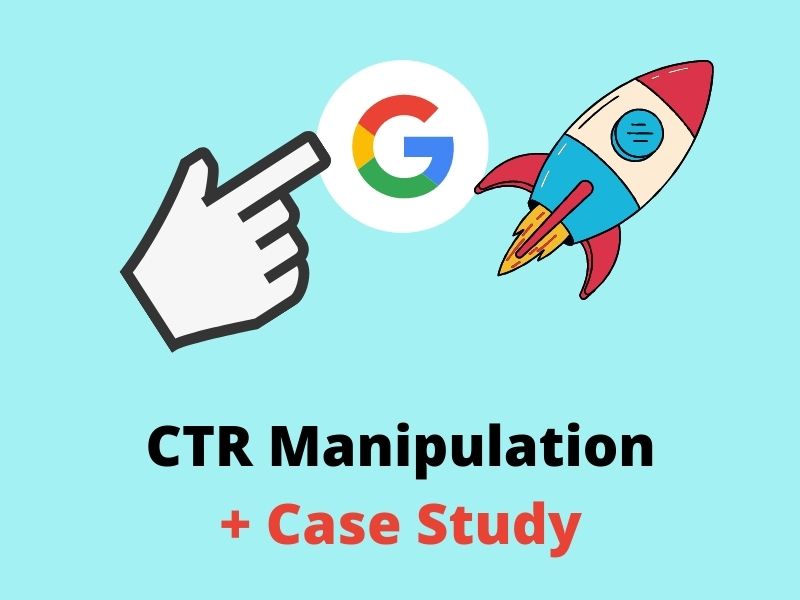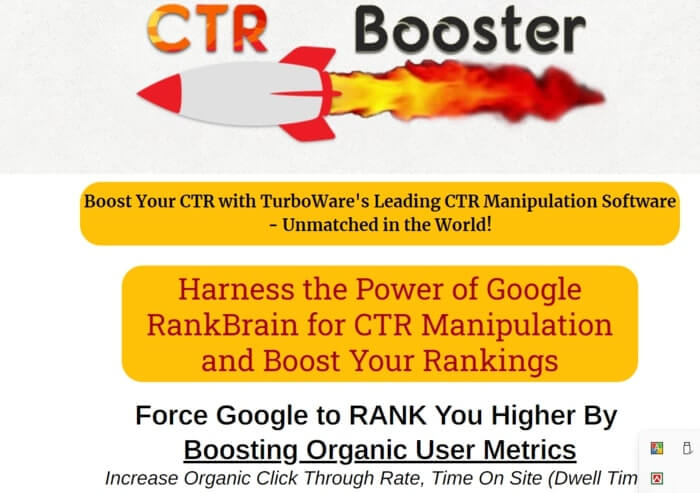Maximize Your Online Effect with LinkDaddy CTR Manipulation Solutions
Maximize Your Online Effect with LinkDaddy CTR Manipulation Solutions
Blog Article
Optimizing Organic Click-Through Rates With CTR Manipulation
The optimization of organic click-through rates (CTR) is a nuanced endeavor that pivots on understanding both individual psychology and efficient material presentation. The landscape is swarming with mistaken beliefs and oversimplifications regarding what genuinely drives CTR.
Comprehending Click-Through Rates
Understanding click-through prices (CTR) is crucial for reviewing the performance of internet marketing methods. CTR measures the percent of individuals that click a certain link or promotion compared to the complete variety of users who see it. A higher CTR indicates that the web content is involving and appropriate to the target audience, while a reduced CTR may signify a requirement for optimization.
To calculate CTR, split the variety of clicks by the number of impressions and multiply by 100. For example, if an advertisement gets 300 clicks out of 10,000 impacts, the CTR would be 3%. This metric is vital for assessing different elements of digital advertising, including seo (SEARCH ENGINE OPTIMIZATION), e-mail projects, and social media sites advertising.
Furthermore, assessing CTR assists marketing professionals identify which techniques generate the best outcomes and which call for refinement. By concentrating on enhancing CTR, businesses can enhance their web content's exposure and efficiency, leading to increased web traffic and prospective conversions. Comprehending the subtleties of CTR is fundamental for any marketing professional aiming to enhance their on the internet existence and maximize return on investment (ROI)

The Psychology of Individual Habits
Individual actions is significantly affected by mental elements that dictate exactly how individuals communicate with online web content. Recognizing these elements is vital for optimizing click-through prices (CTR) in natural search results page. Cognitive biases, such as the anchoring effect, play a vital role in forming customers' understandings. Their initial perceptions can greatly affect their subsequent judgments concerning significance and integrity. when users run into details.
Emotional reactions additionally substantially impact individual actions. Web content that reverberates emotionally can cause a feeling of necessity or interest, triggering users to click. In addition, social proof-- such as user reviews or ratings-- can enhance depend on and encourage engagement, as individuals typically aim to the habits of others to inform their own decisions.
Moreover, the principle of scarcity can drive clicks - CTR Manipulation Service. Limited-time offers or exclusive content create a worry of missing out on out (FOMO), engaging customers to act quickly. Understanding these mental chauffeurs allows marketing experts to produce more compelling content that resonates with their target audience
Efficient CTR Manipulation Methods
Leveraging psychological understandings can substantially enhance click-through rates (CTR) through targeted manipulation techniques. Among the most reliable techniques is making use of engaging headlines that evoke curiosity or urgency. Wording titles as questions or incorporating numbers can draw in more focus, triggering customers to click.
One more technique entails enhancing meta click descriptions to produce a sense of importance and immediacy. By clearly describing the remedies or advantages provided in the web content, you can engage potential readers and encourage them to click. In addition, utilizing power words-- such as "exclusive," "confirmed," or "complimentary"-- can Web Site boost the charm of your content.
Aesthetic aspects additionally play an essential duty. Including distinctive pictures or thumbnails can draw individuals in and improve CTR. A/B testing various visuals can assist identify which pictures reverberate finest with your target market.
Finally, ensuring that your content promises deliverable worth brings about higher CTR. When customers perceive that clicking will give them with meaningful insights or remedies, they are more probable to involve. By employing these methods attentively, marketing professionals can effectively control CTR to their benefit while keeping honest requirements.
Usual Myths Regarding CTR
A number of false impressions border click-through prices (CTR) that can lead marketers to make misguided decisions. While a high CTR suggests that even more individuals are clicking, it does not guarantee sales or conversions.
Another common idea is that CTR is an isolated metric. In reality, CTR ought to be reviewed along with other efficiency signs, such as bounce rate and conversion price, to acquire an all natural view of project success.
Additionally, some marketing experts presume that enhancing for CTR alone is sufficient. Focusing specifically on CTR can lead to clickbait methods that might attract clicks but fall short to involve users meaningfully. CTR Manipulation. This strategy can harm brand online reputation and cause lower retention prices
Lastly, there is an idea that CTR strategies are generally efficient. The reality is that optimum CTR strategies can vary dramatically across markets and target audiences, necessitating tailored strategies for different market sections. Understanding these myths is important for creating effective CTR techniques that straighten with overarching advertising objectives.
Measuring CTR Success
Although high click-through prices (CTR) can show successful interaction with web go to my site content, measuring their true success calls for a thorough analysis of several aspects. Initially, it is necessary to comprehend the context in which the CTR is achieved. A high CTR on a misleading title may not convert to significant engagement or conversions, eventually showing poorly on the brand's trustworthiness.
Second, examining the resource of website traffic is essential. Organic web traffic from online search engine can indicate a robust content technique, while clicks from pointless resources might show a lack of targeting. In addition, gauging the subsequent user behavior is essential; evaluating metrics such as bounce rate, time invested in page, and conversion rates can offer deeper insights into the quality of the interaction initiated by the CTR.

Conclusion

The optimization of organic click-through prices (CTR) is a nuanced undertaking that pivots on understanding both user psychology and effective material discussion. CTR measures the percentage of individuals that click on a particular web link or advertisement contrasted to the total number of customers who see it. A greater CTR indicates that the content is involving and relevant to the target audience, while a reduced CTR may signal a requirement for optimization.
Concentrating solely on CTR can lead to clickbait techniques that may bring in clicks however fall short to engage users meaningfully. In addition, gauging the subsequent user behavior is important; analyzing metrics such as bounce rate, time spent on page, and conversion prices can provide much deeper understandings into the quality of the engagement started by the CTR.
Report this page